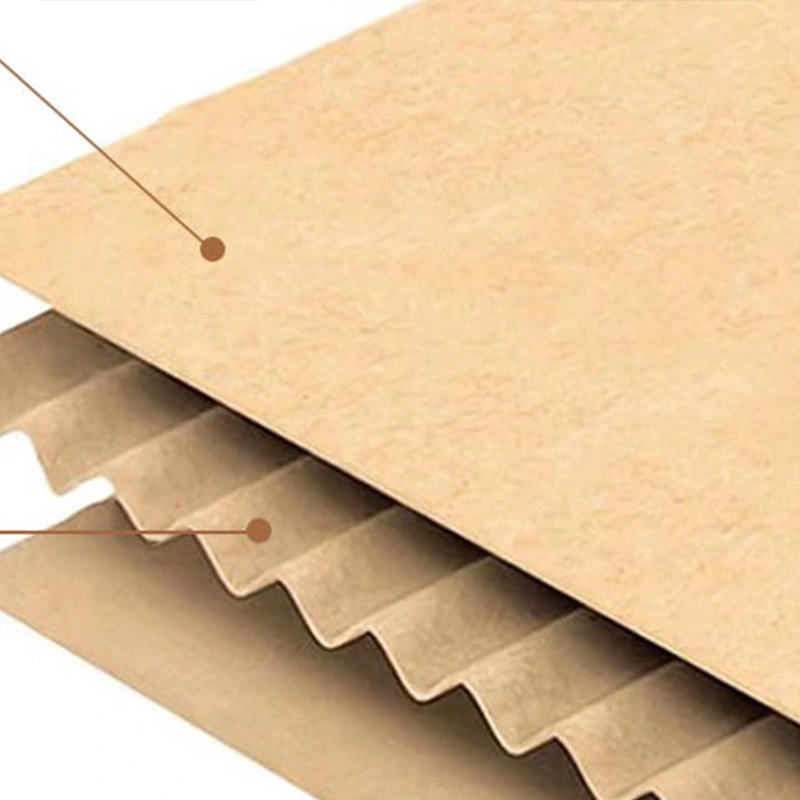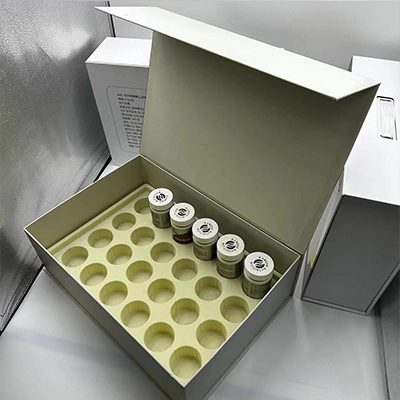Is paper packaging really biodegradable?
Paper packaging does biodegrade under "the right conditions". Biodegradation refers to the process in which substances are decomposed into water, carbon dioxide (or methane), and biomass under the action of microorganisms. Compared with petroleum products such as plastics, paper packaging is more easily decomposed by microorganisms in nature because it is mainly composed of plant fibers (such as wood pulp). However, the "biodegradation speed" and efficiency of paper packaging are affected by many factors, including:
1. Environmental conditions: humidity, temperature, and oxygen levels will affect the activity of microorganisms and thus the degradation rate of paper packaging. Paper packaging generally degrades faster in warm, humid environments.
2. Chemical treatment: In order to enhance waterproofing, durability, and other properties, some paper packaging may undergo chemical treatment or add coatings (such as plastic, wax, or other additives). These treatments and additives may slow down the biodegradation process of paper packaging or even make it difficult to completely degrade it.
3. Thickness and density: The thickness and density of paper packaging will also affect its degradation rate. Thicker or denser paper materials may take longer to fully degrade.
4. Processing and recycling: Paper packaging can biodegrade relatively quickly under controlled conditions in industrial composting facilities. However, in natural environments or landfills, the degradation process can be significantly slowed down due to different conditions.

How long does it usually take for paper packaging to biodegrade?
As mentioned above, the biodegradation time of paper packaging can vary greatly based on a variety of factors, including the type of paper, its thickness, whether it has been chemically treated or has a waterproof coating added, and environmental conditions. Generally speaking, in an ideal composting environment, it can take anywhere from a few weeks to a few months for paper packaging to biodegrade.
(1) Environmental conditions: In a warm, humid environment with active microorganisms, paper packaging will degrade faster. For example, in industrial composting facilities, controlled temperature and humidity conditions can speed up the decomposition process of paper.
(2) Paper type and treatment: untreated plain paper packaging (such as uncoated newspaper) can begin to decompose within a few weeks in the right environment. However, if the paper packaging is chemically treated or has a waterproof coating such as plastic or wax added, its degradation process may be significantly prolonged, taking months or even years.
(3) Thickness and density: Thicker or denser paper packaging materials will also take longer to degrade because this increases the difficulty for microorganisms to break down the material.
(4) In natural environments, such as ordinary outdoor conditions, paper packaging usually degrades more slowly than in composting facilities because the environmental conditions are not as ideal as in the latter. In this case, the paper packaging may take several months, a year, or more to completely decompose. In landfills, even easily degradable materials may take longer to decompose due to a lack of oxygen and suitable decomposition conditions.
Is paper packaging degradation technology mature?
The degradation technology of paper packaging itself is based on the biodegradable properties of paper, a natural material. Because paper is mainly composed of plant fibers (such as cellulose), it is relatively easy to be decomposed by microorganisms in the natural environment and converted into water, carbon dioxide (or methane), and other harmless natural substances. Therefore, from this perspective, the biodegradation technology of paper packaging is relatively mature.
As concerns about environmental protection and sustainable development increase, the degradation technology of paper packaging is also constantly developing and innovating to improve its environmental performance and application scope. The following points demonstrate the maturity and development direction of paper packaging degradation technology:
1) Improved paper materials: By using different raw materials (such as recycled pulp, agricultural by-products, etc.) and improved production processes, paper packaging materials that are more environmentally friendly and easier to degrade are developed.
2) Biodegradable coating: In order to improve the waterproof and oil-proof properties of paper packaging while maintaining its biodegradability, biodegradable coatings based on natural materials (such as starch, protein, etc.) are currently being developed.
3) Industrial composting technology: Although paper packaging can biodegrade in the natural environment, in industrial composting facilities, by controlling temperature, humidity, and ventilation conditions, the degradation process of paper packaging can be accelerated so that it can decompose in a shorter time.
4) Recycling and recycling: Although it does not directly involve degradation technology, improving the recovery rate and recycling capabilities of paper packaging is an important aspect of reducing environmental impact. By designing paper packaging to be easily recyclable and improving recycling processing efficiency, the need for new raw materials can be reduced, and waste generation can be reduced.
Specialized institutions and organizations that dedicated to researching and promoting the biodegradability:
These include government environmental agencies, non-governmental organizations (NGOs), industry associations, and research and testing laboratories. Their work can range from developing and promoting environmental standards and certifications to conducting material testing, researching new sustainable packaging solutions, and raising public awareness of the importance of environmentally friendly packaging.
Examples of institutions and organizations related to paper packaging biodegradability and environmental protection:
(1) Paper Environmental Protection Association International (TAPPI): This is a global professional organization dedicated to the scientific and technological advancement of the paper and paperboard industry. TAPPI provides standards, educational resources, and technical information on paper production, recycling, and sustainability.
(2) Forest Stewardship Council (FSC): FSC is an international non-profit organization that promotes responsible management of forests through its certification system. FSC-certified paper packaging products indicate that their raw materials come from sustainably managed forests, helping to protect the environment and ecosystems.
(3) Biodegradable Products Institute (BPI): BPI is an organization that specializes in certifying products and packaging that are industrially compostable. Its certification ensures that products are fully biodegradable in commercial composting facilities.
(4) European Bioplastics: Although primarily focused on bioplastics, this organization is also involved in the promotion and research of biodegradable and bio-based packaging solutions, including related applications for paper packaging.
(5) Environmentally Friendly Packaging International Alliance (SPC): SPC is an industry working group dedicated to developing and implementing sustainable packaging solutions. It provides resources and guidance to help companies improve the environmental performance of their packaging.
Although paper packaging is more biodegradable than many other materials, the exact degradation time depends on a variety of factors. For environmental sustainability, in addition to considering the use of biodegradable materials, the recycling and reuse of paper packaging should also be encouraged. Increased public awareness of paper packaging recycling and proper disposal is also an important factor in promoting the development of paper packaging degradation technology. People from all walks of life need to work together to improve the environmental performance of packaging materials and reduce their impact on the environment.
 GET A QUOTE
GET A QUOTE
 YG Paper Packaging Co., Ltd.
YG Paper Packaging Co., Ltd.
 EMAIL
EMAIL
 PHONE
PHONE

 English
English






 Call us on:
Call us on:  EMAIL:
EMAIL:  No.1 Gaoxin Road, Zhouzhuang Town, Kunshan City, Jiangsu Province, China.
No.1 Gaoxin Road, Zhouzhuang Town, Kunshan City, Jiangsu Province, China. 


